What is a mind map?
A mind map is a graphic representation of thoughts and thought processes that are organized around a central theme or topic. It is a visual thinking tool mainly used to connect ideas, show the relationship between parts, and expand on concepts in a non-linear and creative way. Hence, it serves as a versatile framework for brainstorming, planning, problem-solving, and knowledge organization.

By its visual representation, a mind map becomes one of the best ways to structure any kind of material, for people tend to remember information easier when it is visually presented.
30+ Creative Mind Map Examples for Students
Note Taking Mind Map
Mind maps are a much more effective note-taking tool than traditional note-taking methods. Instead of transcribing what your teacher says, mind maps compel you to actively think about what you hear and take down essential keywords and meaningful images. Here’s a note-taking mind map example that gives you a basic introduction to the Speech Act Theory.

Weekly Plan Mind Map
This is a general structure for a Weekly Plan Mind Map. You can customize it further based on your specific needs, preferences, and the level of detail you want to include.
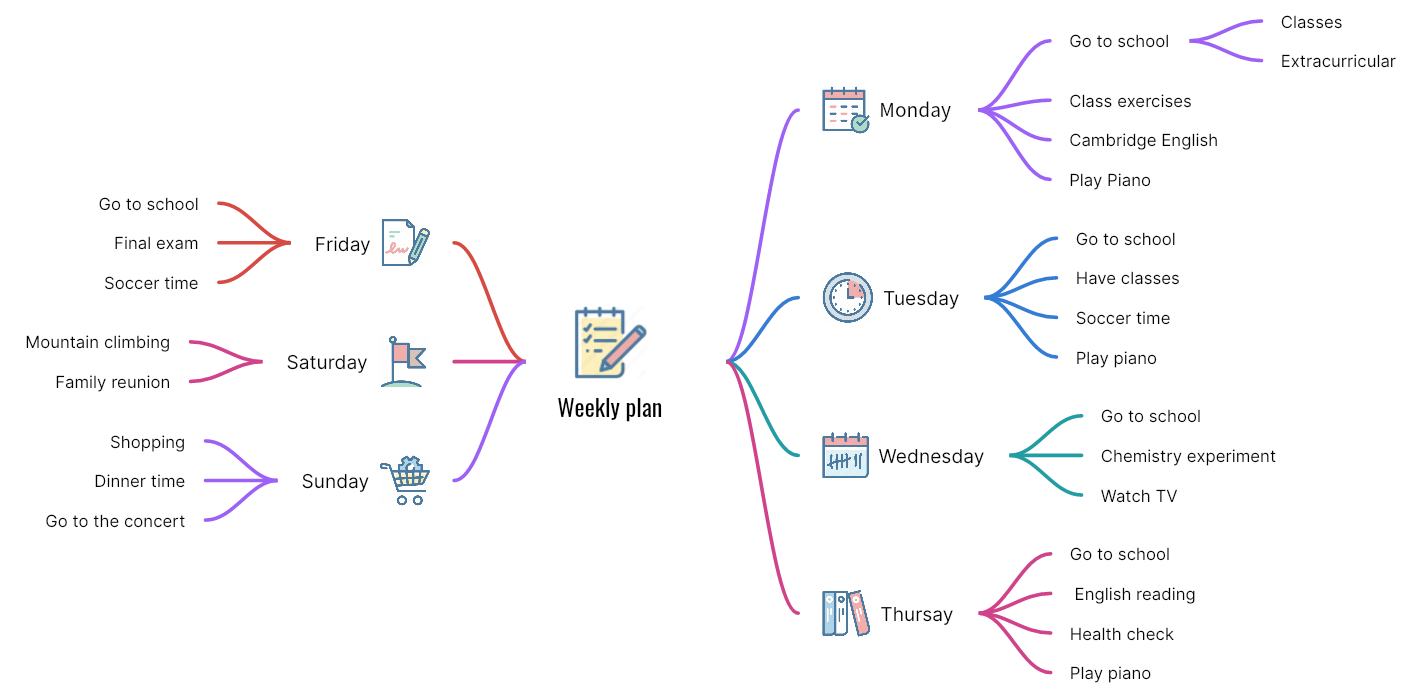
Exam Revision
This exam preparation mind map is an excellent resource for students. Mind maps for exam preparation can provide immediate benefits for learning and recollection while studying, it is best to cultivate a mind mapping habit throughout the year. This will allow students to focus on their daily classes and assignments while also feeling prepared and confident for exams.
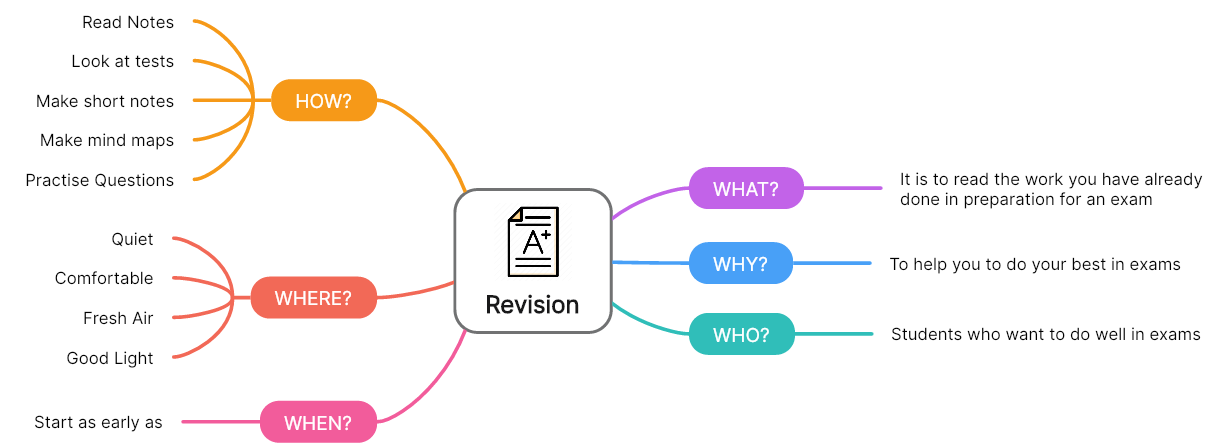
Brainstorming for Research Projects
This brainstorming mind map example should give you an idea of where to start when conducting a research project brainstorming mind map. You can adapt it further based on your specific research topic, methodology, and requirements. The goal is to visually organize your thoughts and ideas, ensuring a comprehensive and well-planned research project.
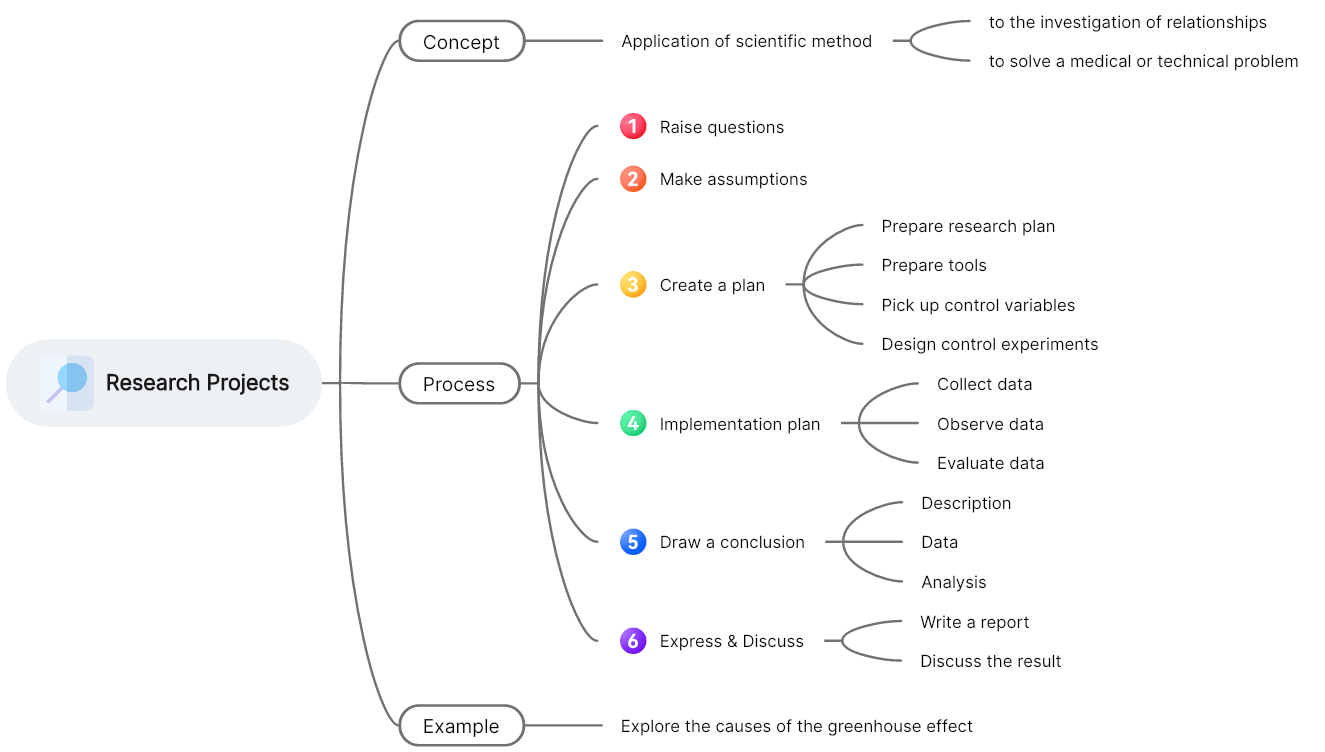
Book Summary
This is an example of using mind maps to organize the basic information of the book Little Prince. This book summary mind map example should give you an idea of where to start when you carry out to read a new book.

Essay Writing Outline
This outline is a general framework for writing an essay. You can adapt and modify it according to the specific requirements of your essay and the points you want to address. You will find mind mapping enables you to explore the plots and contents.
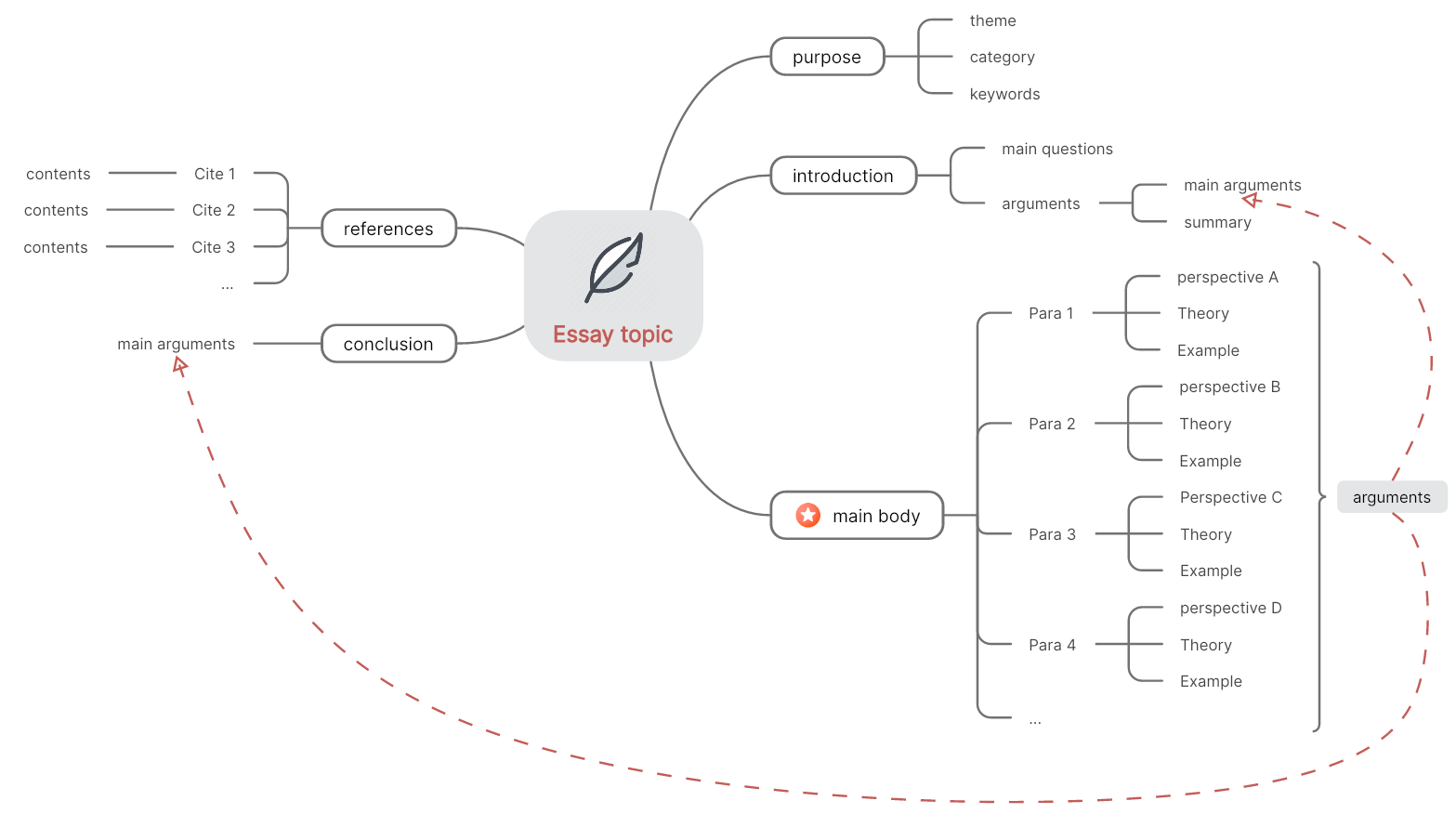
Science Research
This scientific research mind map template describes the basic scientific research knowledge in an intuitive way. Using a mind map like this can improve the productivity of science students and teachers.

Language Learning
Mind-mapping is also an effective method in language learning, for it can visualize the connections of various complicated terms, making things easier to remember. Below is an example of categorizing the parts of speech in English learning.
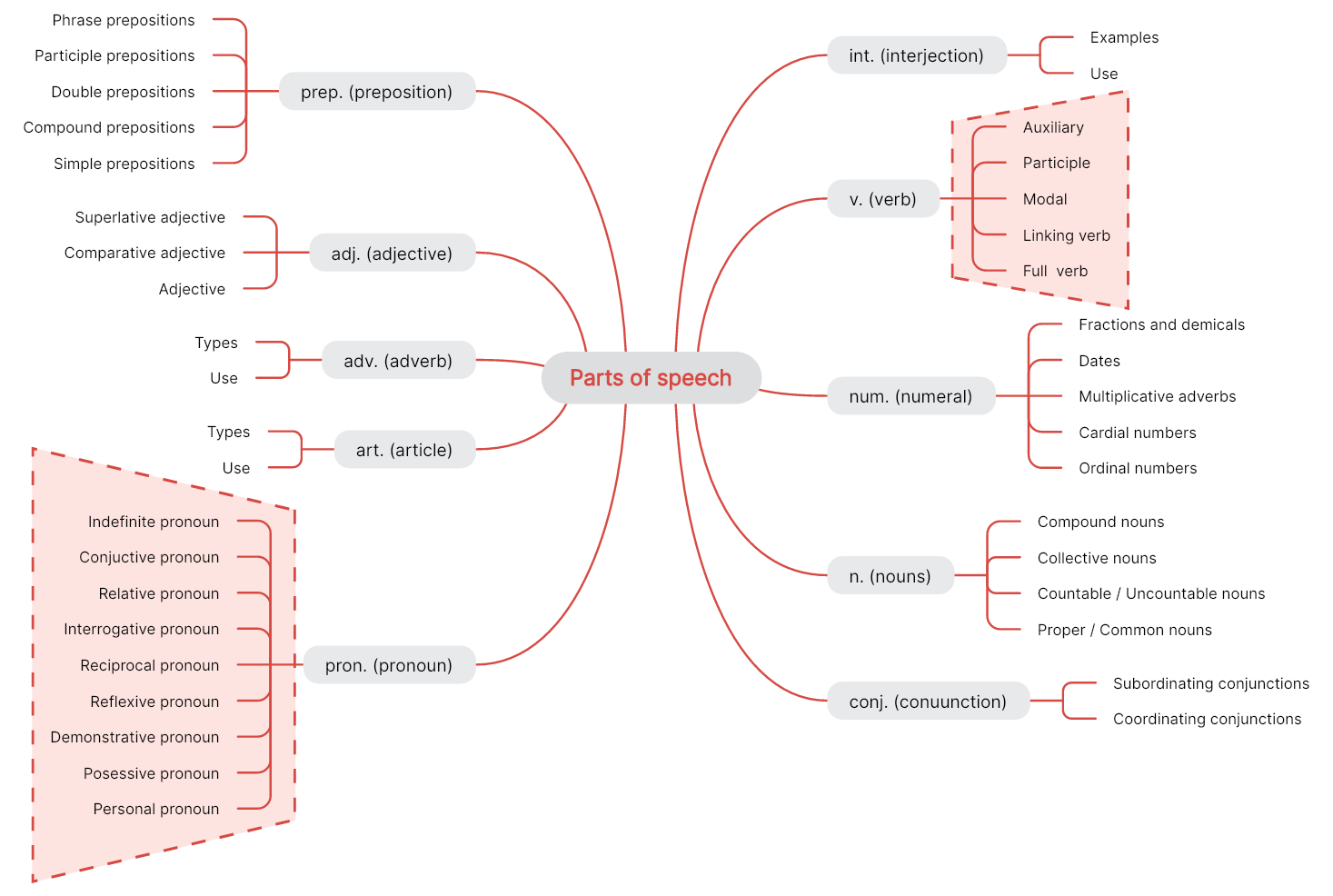
Category Mind Map
One of the key features of a mind map is its ability to visually represent and organize information into categories or branches. Therefore, it is effective in creating taxonomies or classification systems. Below is a 7-continent mind map, which gives a brief introduction to the land area, population, and features of each continent.
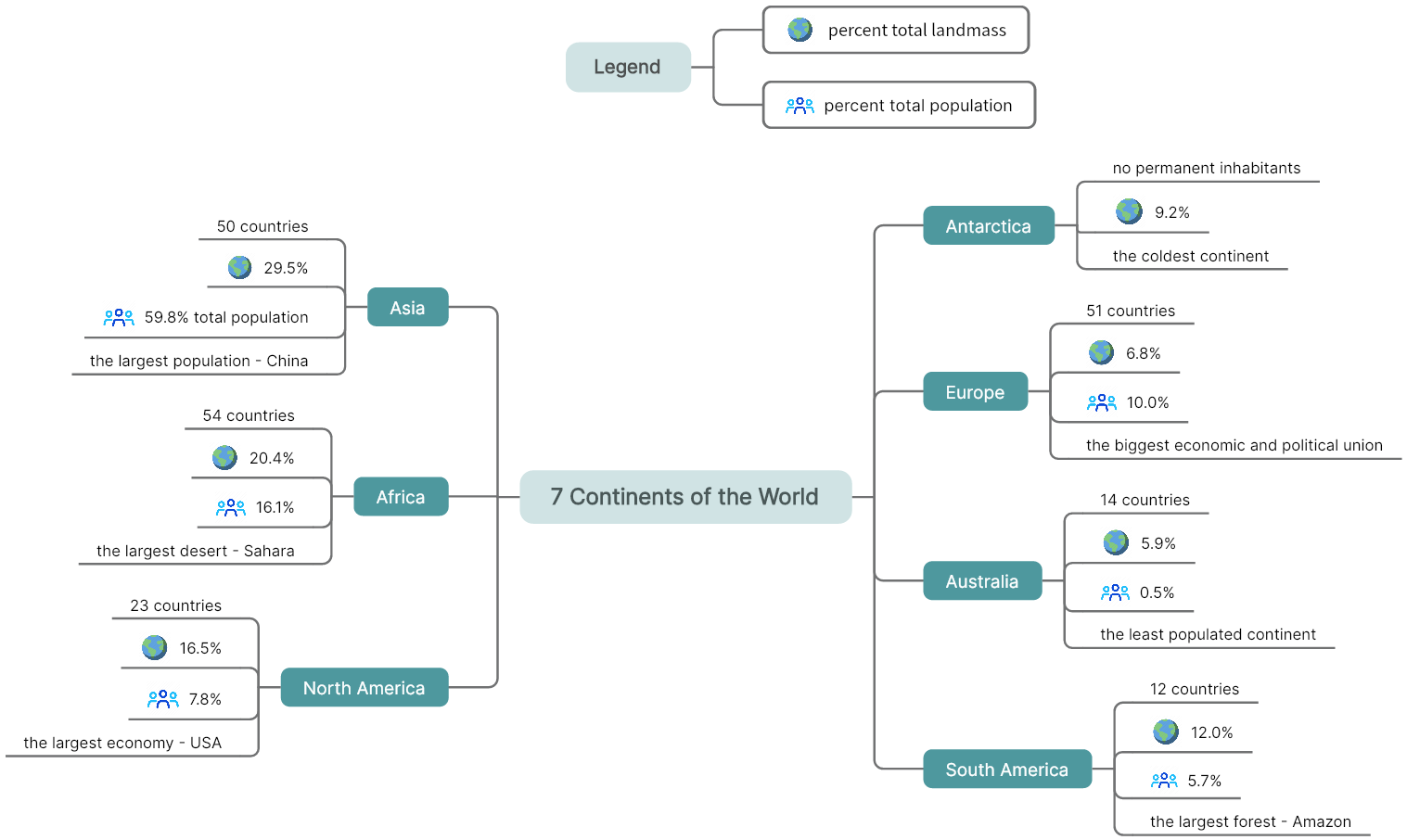
History Timeline
Mind maps can be a great tool to map out the timeline of a historical event or the history of a country or an organization. The following example is a mind map that lists out the timeline of the UN history.

Subject Concepts
A mind map is highly useful in understanding complex concepts in a subject area. Its hierarchical structure enables you to organize and categorize these layers effectively. You can arrange information from general to specific, creating a logical flow of ideas and facilitating a deeper understanding of the subject matter.

Biography Mind Map
By using a mind map to create a biography, you can effectively organize information, visually represent connections, and present a comprehensive and engaging account of the person's life. The flexibility and visual nature of mind maps make them particularly useful for capturing and presenting the complexity and richness of a biography. The following example of the biography of Benjamin Franklin should give you an idea of where to start.
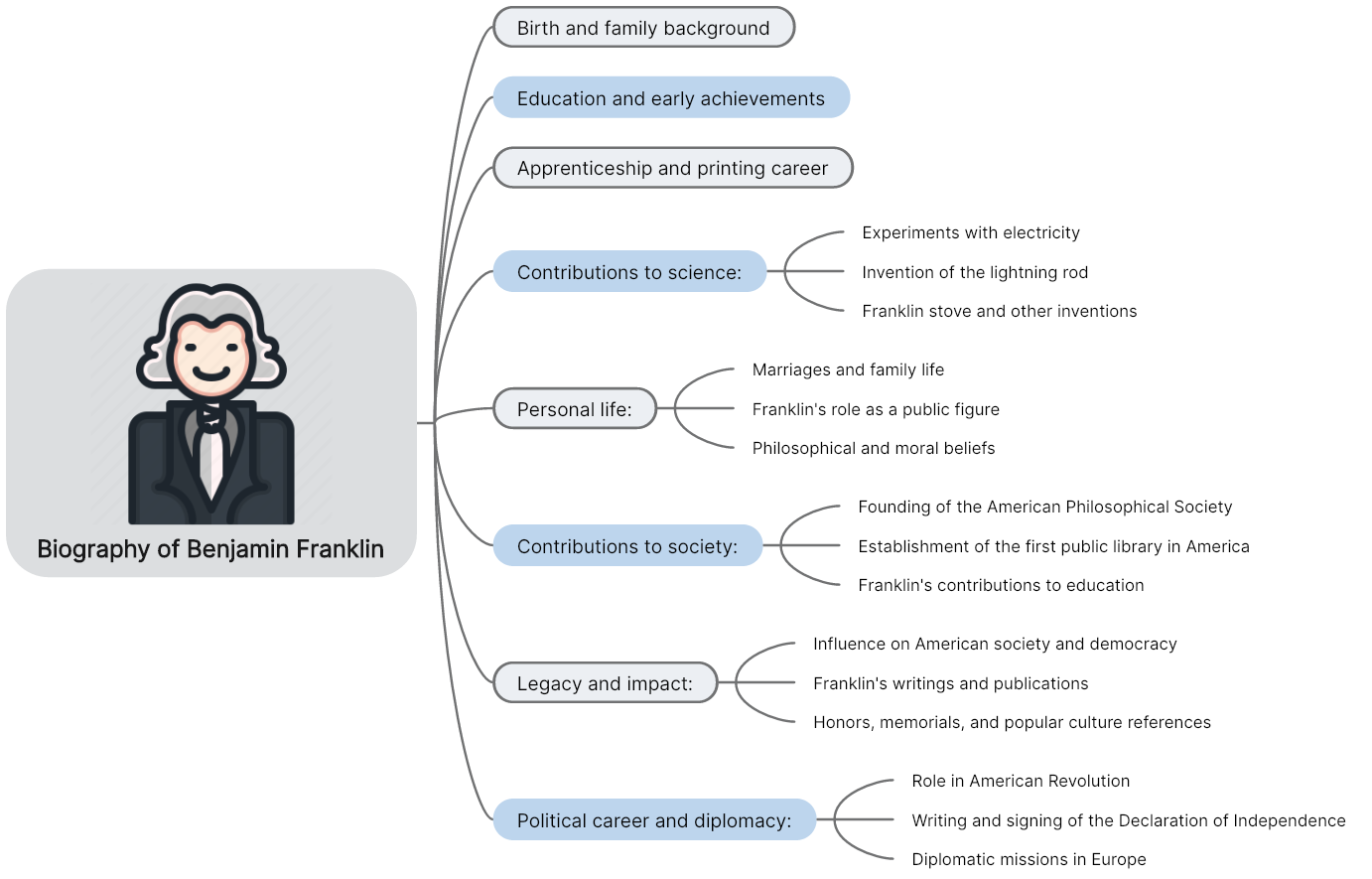
Course Syllabus
You can create a mind map like the following example to prepare yourself ahead of a course. Such a mind map will help you understand what you need to learn, how you’ll learn it, and how to be sure you’ve learned it.

School Events Planning
If you’re in charge of organizing a school event, it may be helpful if you check out this mind map example. The three main branches of the mind map are goals and objectives, strategy, and team formation. In other words, you can highlight what the event is about or aims to achieve, how you plan to achieve it, and the team you’ll be working with.
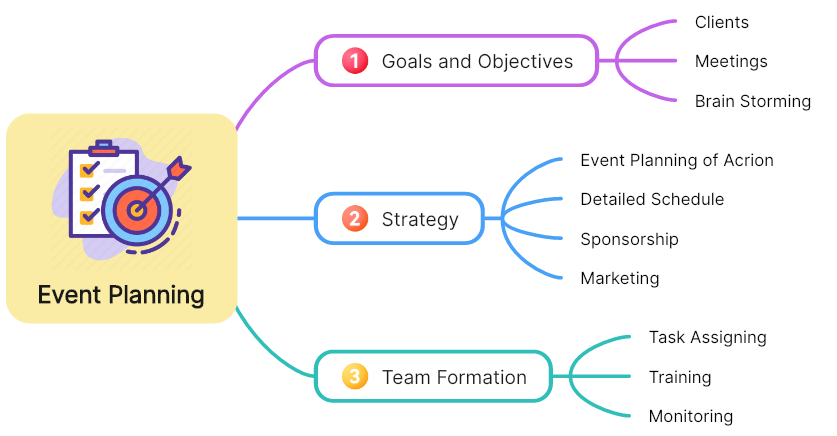
Personal Finance
A personal finance mind map is one of the best mind map examples for you as a student if you want to improve your money management. You can identify and rank payments you need to make and specify how much you should save. This mind map features an exciting design with clever color play. While it consists of only three finance activities, you can design yours to include more.
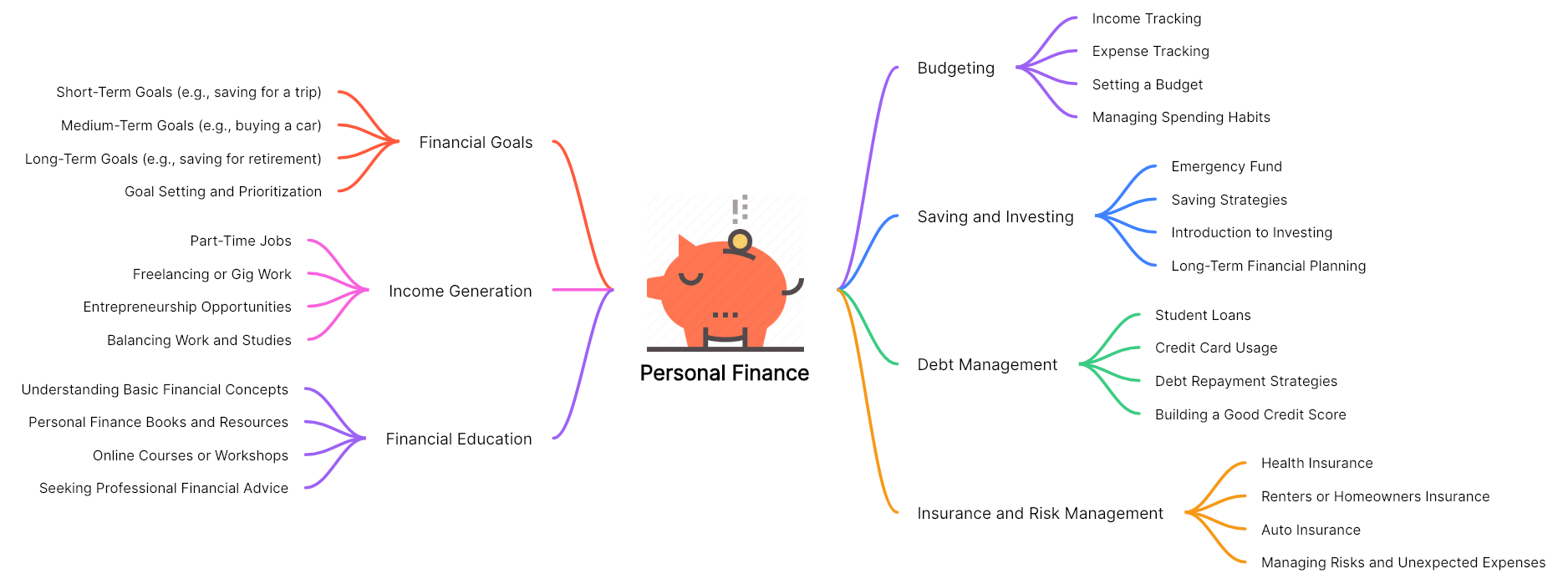
Personal Growth Plan
This personal growth plan for college students is a starting point, and you can tailor it according to your specific aspirations and circumstances. The goal is to focus on different areas of personal development and set actionable steps to enhance your college experience and personal growth journey. Regularly review and update your plan as you progress through college, keeping in mind your evolving goals and priorities.

Career Plan
Below is a general structure of a career plan mind map for college students. You can customize it further based on your specific career aspirations and interests. Feel free to add or modify branches and sub-branches to capture all relevant aspects of your desired career path. The goal is to have a visual representation of the different components that contribute to your career growth and success.
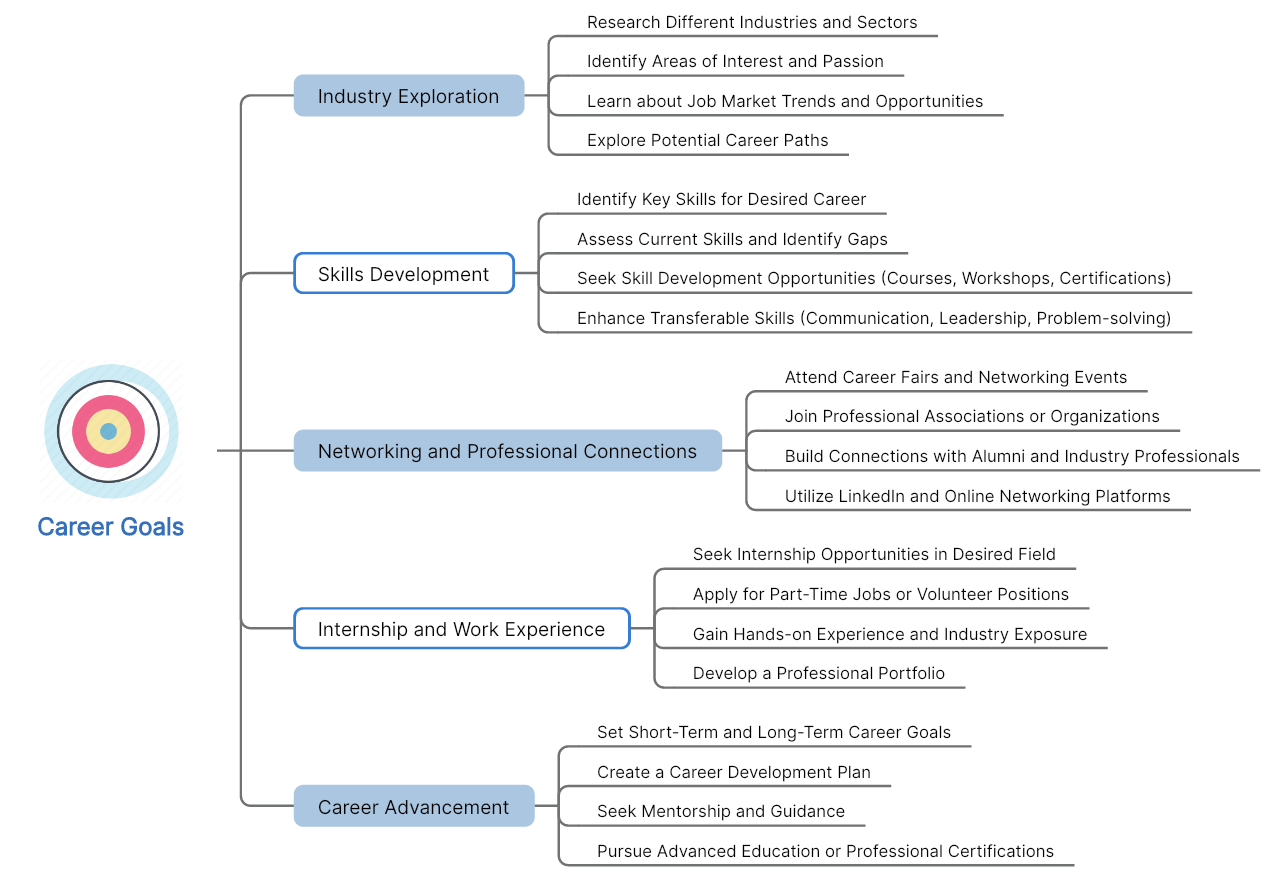
Complex Math Problems
Depending on the specific problem you're working on, you can customize the mind map by adding sub-branches that relate to the problem's unique characteristics. The goal is to have a visual representation of the problem-solving process, enabling you to analyze the problem, identify key concepts, select an appropriate strategy, and systematically solve the problem while verifying the solution.
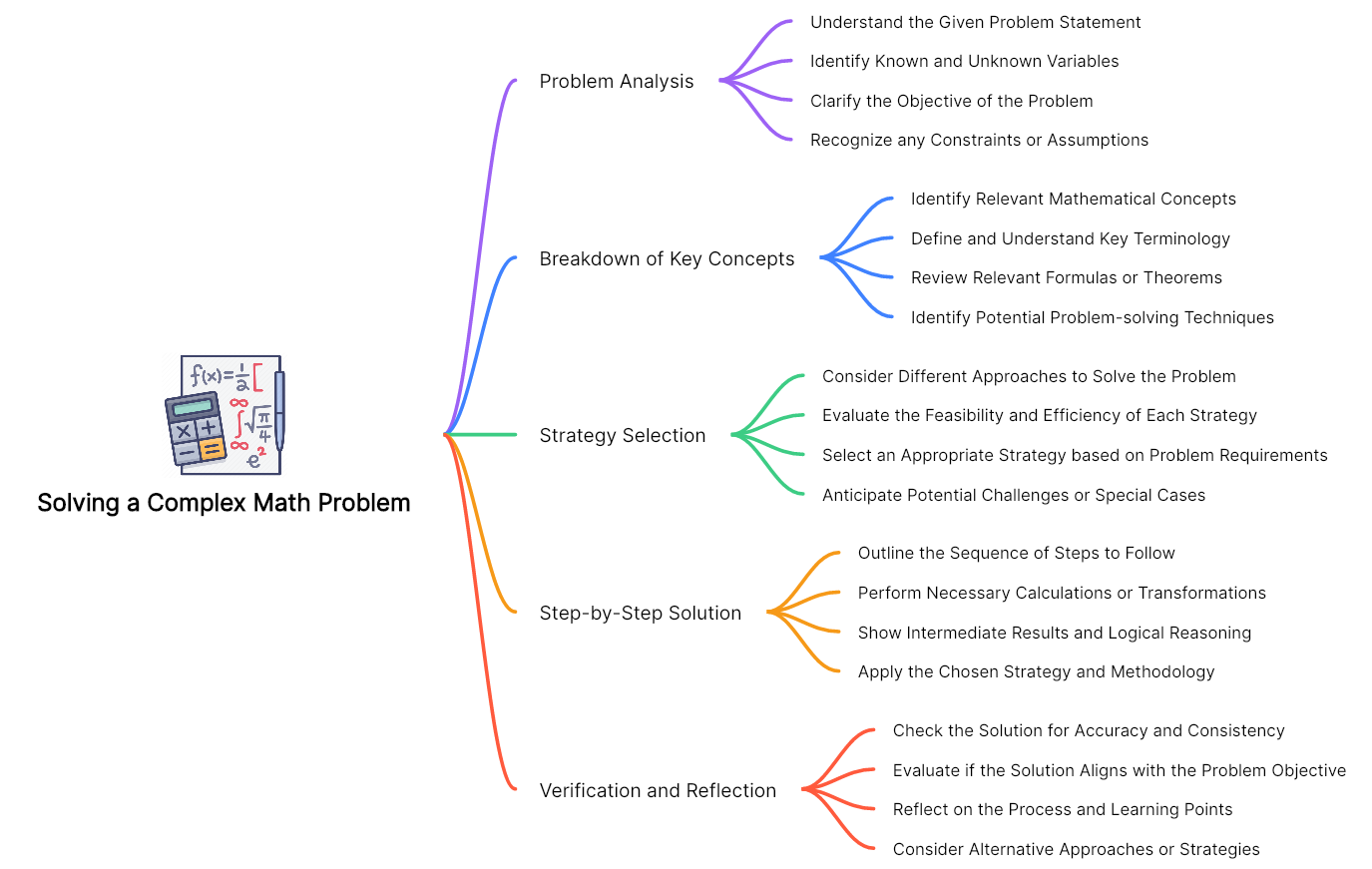
Extracurricular Activities & Events
Below is an example of using a mind map to plan and organize extracurricular activities and events. Adapt the mind map to suit your specific activities and events, adding or modifying sub-branches as necessary. The goal is to have a visual representation of the planning process, enabling you to effectively manage event logistics, resources, communication, participant engagement, and post-event evaluation.

Memorization Mind Map
Mind maps are effective tools for memorizing all kinds of information. In the following example, the mind map serves as a visual guide and reminder of various approaches to vocabulary memorization. Experiment with different techniques and adapt the mind map as you discover what works best for you.
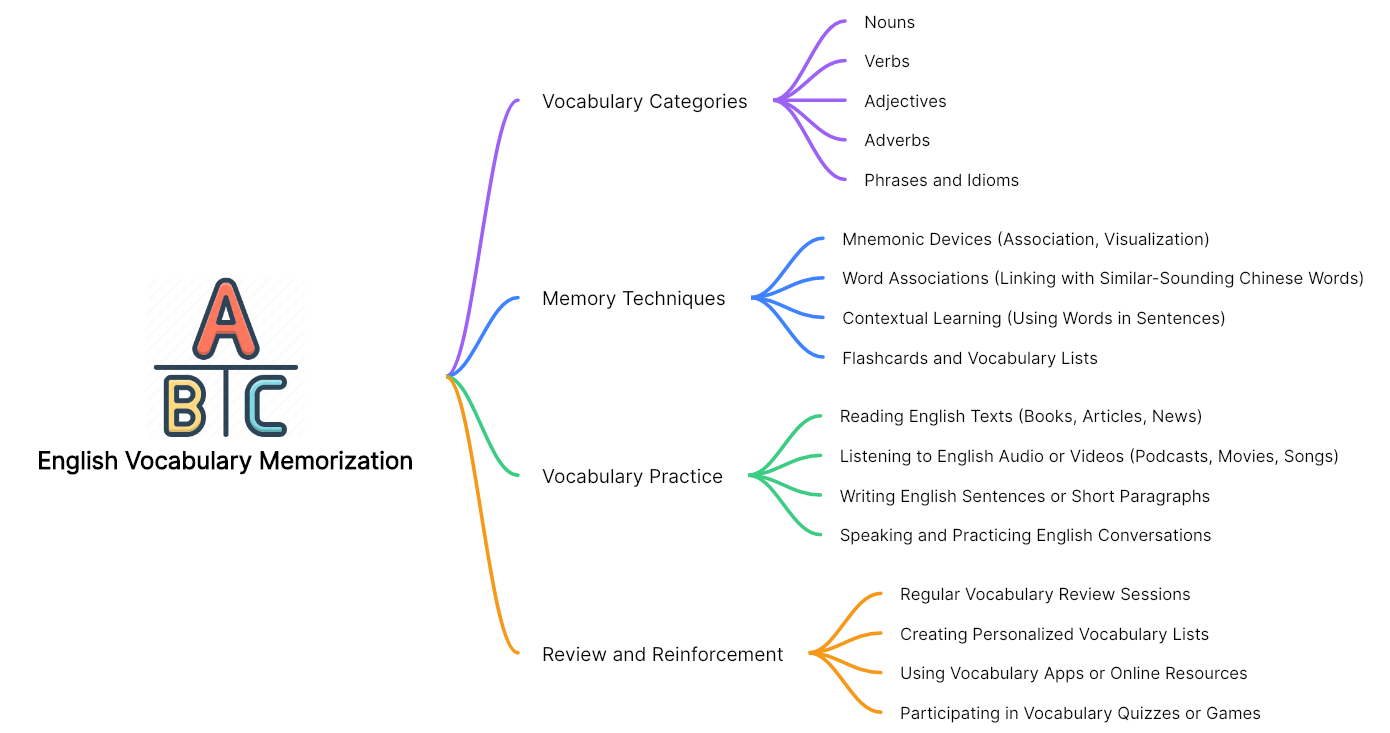
Laboratory Report
Below is an example of a lab report mind map. Science, for example, a biology lecture, would be a more fun subject to address if students could showcase their creativity with a mind map. It enables them to visualize and retrieve the hypothesis, procedure, and result of an experiment quickly.
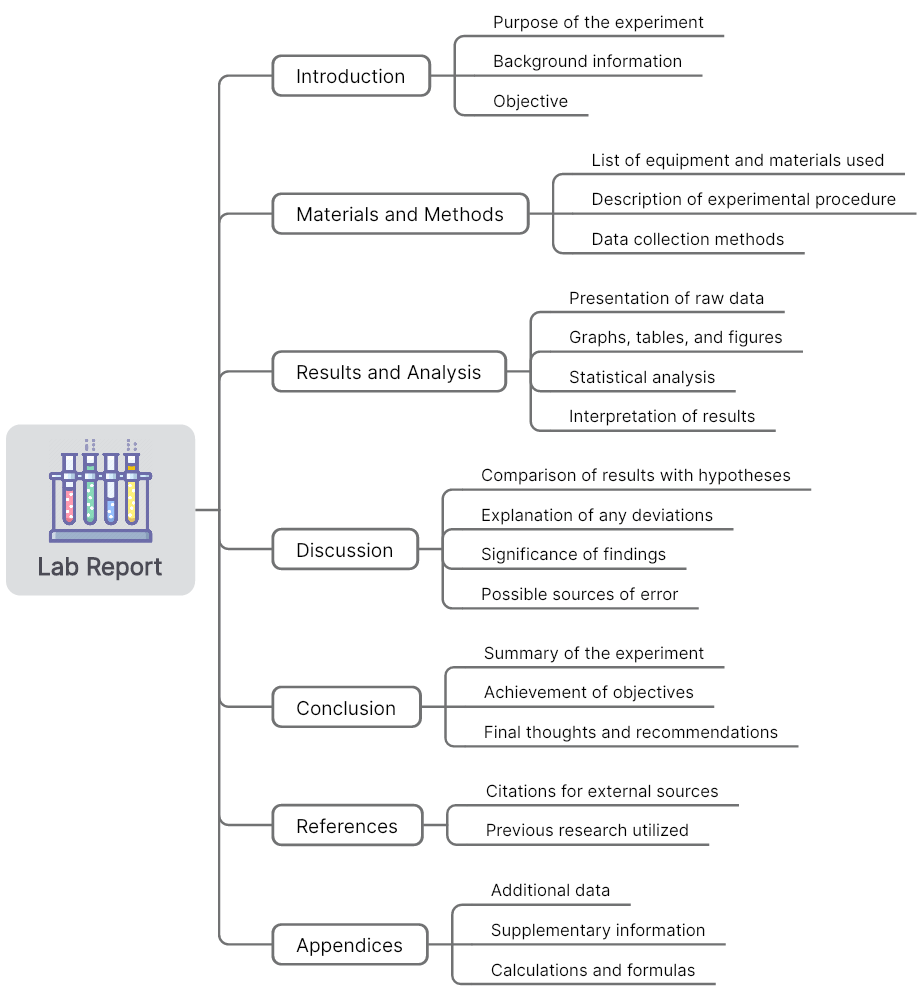
Class Presentation
A great tip for college students is to use mind maps instead of slideshows for class presentations. Mind maps are just as good as slideshows at reminding you what you want to talk about and when, but they’re far better at keeping the attention on what you’re saying. Unlike text-heavy slides, mind maps contain only small amounts of information, so people have to listen rather than read to follow what you’re presenting.

Reading Materials
Take notes from the books and other materials you read in a mind map, and always write down your source in the notes section so you can quickly find it again if you have to. The map format lets you structure your findings and provides you with a good outline to use when it’s time to start writing.
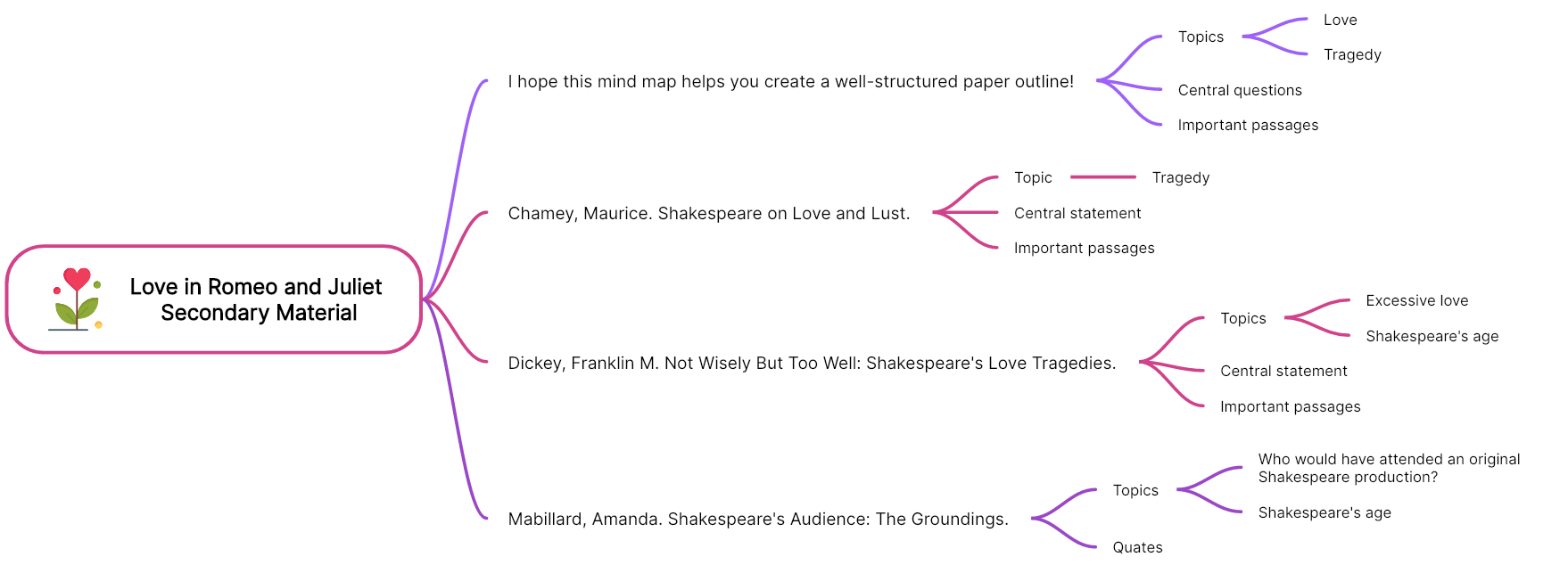
Team Projects
Whether playing as a team leader or not, use of mind mapping examples to plan projects is advisable. Division of action items and track of project processes will be much clearer. It is also a quick and effective way of communicating and discussing by sharing a mind map with other teammates.

Time Management
Students can practice life-essential time management techniques by scheduling an easy-to-track timetable through a mind map. For example, a creative and colorful weekly time management plan can likely boost their engagement and motivation to do a detailed activity punctually.

Creating School Yearbook
It will be pure fun to tell school life stories with mind maps. Customize it further based on your school's specific requirements and design preferences. It assists in brainstorming ideas, coordinating content and design elements, and ensuring a cohesive and well-executed yearbook.

Theories Comprehension
Digesting an advanced theory or a complex article full of information and figures is difficult. Concept maps will facilitate students to break it into manageable chunks. They can also memorize knowledge maps better by illustrating practical examples relatable to the theory.
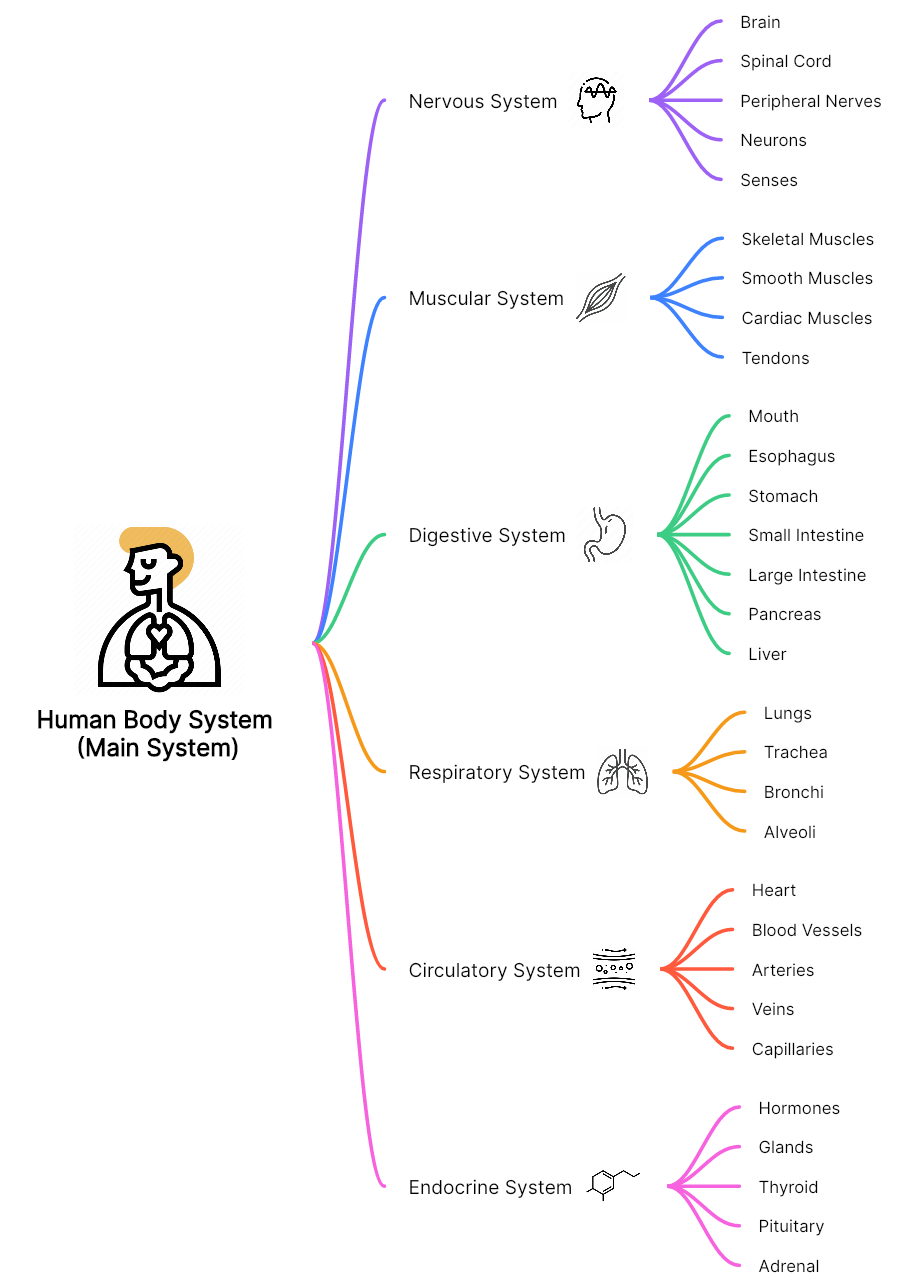
Semester Planning
Come into a new semester with more confidence by mind-mapping college learning strategies! Requisite courses, lectures, and relevant materials can be easily visible just in one template. Students can also include other crucial information such as a subject's broad goal, exam dates, subject credits, etc.

Meeting Record
Meetings have been a part of school life. Students always have to conduct a meetings for their school groups, unions, or other organizations. Mind mapping is an effective tool that you can use either to plan your meeting and put your agenda into perspective or to make conference records.
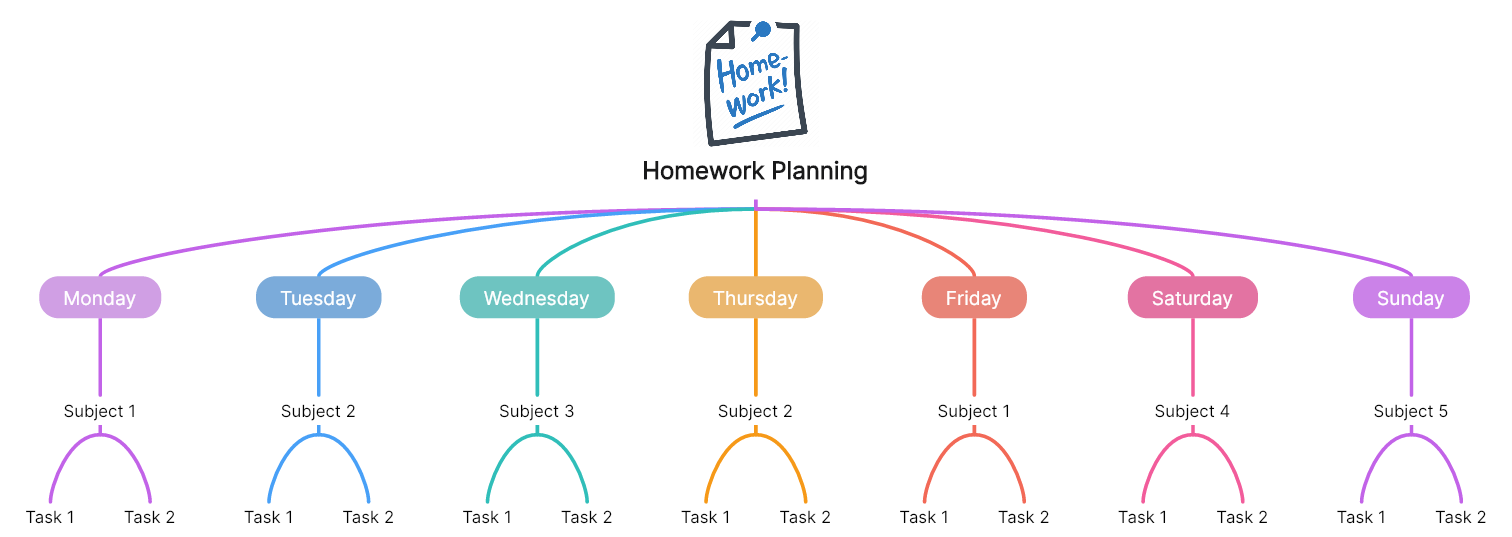
Process Mind Map
Most topics, especially in science classes, involve lots of processes. Take, for instance, when you’re experimenting. You have to complete one process after the other. Mind maps can be a great way to map out each process so that you don’t have to flip or scroll through textbook pages.

Interview Preparation
If you want to make a good first impression during an interview, try the mind mapping technique. Note down everything you need, from answering potential questions like “Where do you see yourself in 5 years?” to the last detail you need to know about the company. Here’s a mind map example that has almost all the aspects you need to consider when you are preparing for an interview.

Knowledge Memorization
As mentioned before, mind maps are effective tools for memorizing all kinds of information, including the terms and concepts during our learning process. The following example maps out the eight planets in the solar system, with two distinct categories presented -- the Jovian planets and the Terrestrial planets. This example maps out the contrasting characteristics and properties directly, making it easier for students to compare their differences and grasp and remember the key information.
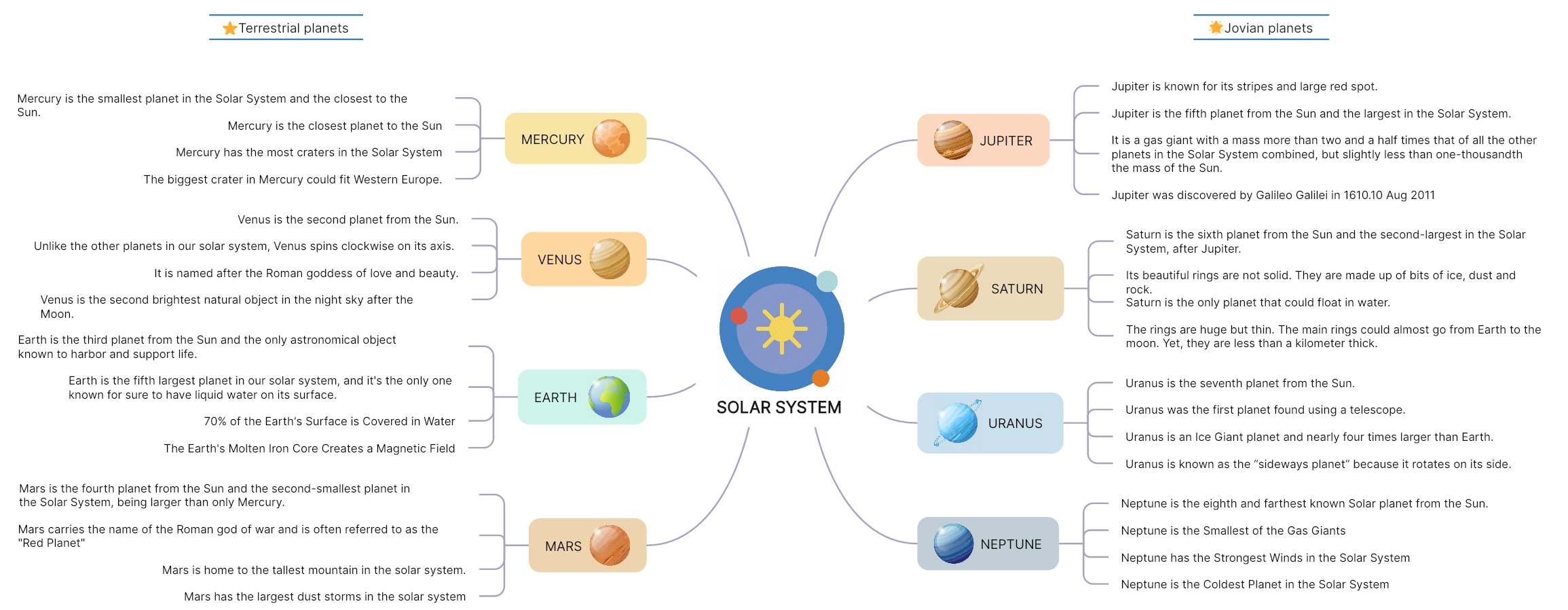
FAQs About Mind Maps
What are the benefits of mind maps for students?
Creating need-based mind maps is of great help to students, aiding their learning process and academic success. The basic idea is to make information as memorable as possible. Here are some key benefits of using mind maps for students:
The radial structure allows condensed ideas to branch out radially from the central concept. Thus, students can rapidly grasp all information and visualize their connections simultaneously.
The mind mapping method makes use of mental triggers (such as pictures, colors, and connections). The fundamental of this technique derives from super memory mastering rules, which helps the brain memorize things more easily.
The combination of keywords and visual tools makes full use of both hemispheres, leading to greater productivity. Creating mind maps makes students self-learners, and it enhances their critical thinking while inspiring their creativity.
Mind mapping has proven to be a powerful note-taking method. It allows students to generate and revise complex lessons better than traditional note-taking.
To sum up, by harnessing the power of mind maps, students can streamline their learning process, enhance their understanding, and improve their overall academic performance.
How to create a mind map?
Here's a step-by-step guide on how to create a simple mind map:
Step 1: Start with a central idea
Begin by identifying the central idea or topic you want to explore. Write it down in the center of your paper or digital canvas.
Step 2: Add sub-topics
Next, add branches that will outline the most basic subtopics. One branch should represent the main category of ideas related to the fundamental subject.
Step 3: Make in-depth information.
Extend the main branches with smaller branches, known as sub-branches. These represent more specific details or sub-categories related to the main branches.
Step 4: Make it more fun.
To make your mind map visually engaging and memorable, use colors to differentiate branches and sub-branches. You can also incorporate icons, symbols, or images to represent concepts or make connections between ideas.
What are the 3 different types of mind maps?
Mind maps are mainly used in the early stage of a project or program to analyze the subject or solve problems. According to different purposes, mind maps can be classified into 3 types:
Library mind maps --information organizing
Presentation mind maps -- presenting ideas and projects
Tunnel timeline mind maps -- organizing or making a project plan









